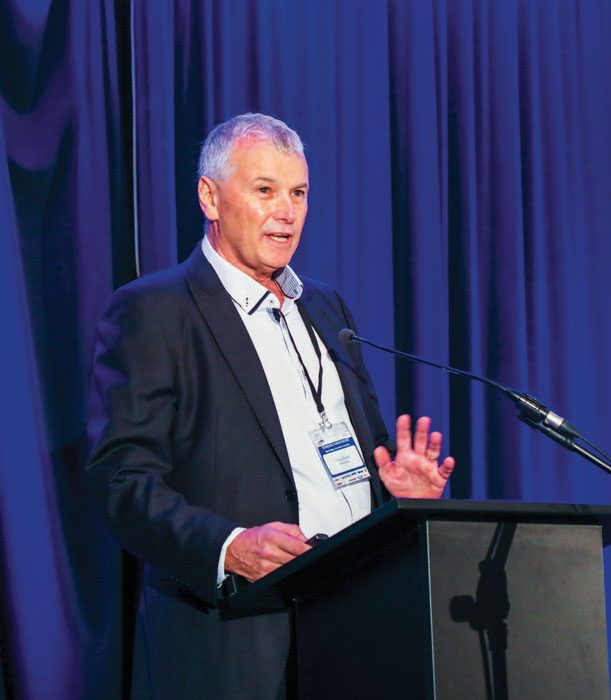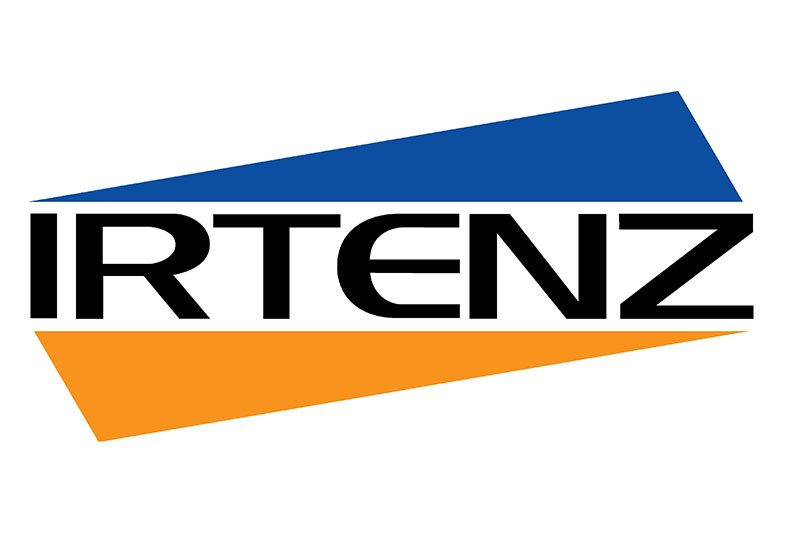IRTENZ CONFERENCE 2019 – Of innovation, collaboration, logic and change
How does the New Zealand transport industry communicate a positive message for change?
With 20 years served on the Mainfreight executive and nigh on double that in the New Zealand freight industry, Craig Evans, Mainfreight country manager, New Zealand, is probably well placed to comment on the industry‘s past, present and future. One thing he reckons is a constant throughout, though, is the need for continual innovation and evolution in the way freight is moved around New Zealand. “The question we ask ourselves [at Mainfreight] every day is, what‘s next? If we don‘t continue to evolve we‘re all in trouble. As an island nation of only five million people, we have to continue to be innovative to be competitive on the world stage,” Evans began. Evans says this thinking has been a trait of Mainfreight‘s since its inception in 1978, when the company‘s way of doing things gave it the reputation of a maverick.
It had to rely on innovation to survive the first few years, using coastal freight and extending the sea freighter cages to carry a third more volume than its competitors could move. With deregulation in the 1980s came the use of larger containers on the rail network. “We got a conventional container and welded rods to the top of it, and sent the container all around the country. When the rods got bent we knew how it could fit through a tunnel and then built the container in that shape,” he recalled. “That‘s the innovation I‘m talking about. Whether it‘s a truck, train or plane it doesn‘t matter. Innovation has to be the lifeblood of what we in this room are,” he told the IRTENZ delegates.
 Photo: Mainfreight executive Craig Evans: “Freight generates prosperity.”
Photo: Mainfreight executive Craig Evans: “Freight generates prosperity.”
The world has moved on, though, becoming far more digitalised, competitive and time-sensitive. The face of transport is changing and Evans says that, given the 2-million tonnes of small freight Mainfreight moves around New Zealand every year, evolution with the likes of H units has been great. But more needs to be done. “New Zealand has greater capacity to have more highvolume units, more like the B-double stuff in Australia. There are certain areas in New Zealand where we think those can operate successfully,” he suggests, warning against a one-shotfits- all policy. “It‘s got to be regional-based, intelligent and logical. I‘m not proposing we run road trains around New Zealand, but we have to think differently about some of the roads in New Zealand.
Auckland–Hamilton for one. We‘ve got to keep thinking and pushing these boundaries.” In doing so he reminds us that New Zealand is largely made up of small and medium enterprises, and guards against not looking just at the large exporters as a template of everything our industry needs to be designed around. “Freight forwarding gets more expensive the faster it goes and the smaller it is, but costs less per kilogram the bigger it is and the slower it goes. So, one of the big drivers for me from an industry perspective is to keep driving down to slower. Fast doesn‘t necessarily mean good. But the thing that drives this is demand, the market forces at play,” Evans says.
And what the market demands, what it has moulded within Mainfreight, is mode neutrality. While road still accounts for 80.2% of tonnage moved (rail 17.5%, coastal 2.3%) by Mainfreight, when looked at as tonnage over kilometre, road‘s dominance drops to 65.8%, with rail almost doubling to 30.7% and coast marginally growing to 3.4%. That‘s the equivalent of 2000 H units of general freight moved along the coast (predominantly Auckland to Christchurch), and 13,000 equivalent H units of general freight on the rail network every year. “That‘s our obligation to get it off the highways and byways. But logic also says that is the right answer for us. Logic will always prevail,” Evans says.
“New Zealand does need great intermodal design. Intermodal is here for the future and around the world that is supported. There‘s a place for everybody in that space. “KiwiRail can never get to the first or last mile and that‘s where road always prevails. But there is technology around the world that allows road to integrate with rail. As a nation, this is the sort of thinking we need. It‘s up to KiwiRail to get their heads around that sort of stuff because it‘s logical and the right decision,” he says.
Mainfreight is also looking to the future and embracing next-generation technologies such as electric and battery technology in its 18 centres of excellence, with 13 under build now in New Zealand – the latest at Mt Maunganui. “Along the docks there will be power charging so as the trucks load they‘ll charge. Forklift technology will include wireless passive charge so as the forklift runs around the dock it‘s self-charging. These facilities will all be driven by solar power and accredited as such.” Mainfreight is also considering environmental challenges. “We‘re using technology for carbon reporting at a consignment level. The algorithms are so scientific they can determine how much carbon is contributed to a specific vehicle at a line level. The technology, whatever it‘ll be, will find its way; it‘s imminent. The market will also drive it in faster than what we realise.”
Evans says that the industry needs to make these positive forward steps if it wants to communicate a great message. As a nation, we should also look to other advanced countries, like The Netherlands, for inspiration. “They understand the prosperity of the freight network is paramount to the prosperity of the country. Freight generates prosperity. These are the subtle messages we need to present, but we need to be seen to do the right things as well; we have a responsibility. These are the messages we deliver to politicians, the regulators who have a role to play,” he says. Evans commented that every stakeholder must be on board to solve these problems and that New Zealand is a nation of industry, which also has to be accommodated.
“We‘ve got to do things right but the conversation needs to be about how. As an industry it‘s not just about technology, but a far broader message we need to convey,” he adds. “We‘re truckies, but welcome to the world order. It‘s coming to our town soon, you can‘t avoid it. We need to sell a better message to the community in terms of what we‘re about. We‘ve got a great story to tell,” Evans says.
Read more
IRTENZ Conference 2023 – PBS
0 Comments12 Minutes
IRTENZ Conference 2023
0 Comments12 Minutes
IRTENZ Conference 2023
0 Comments20 Minutes


